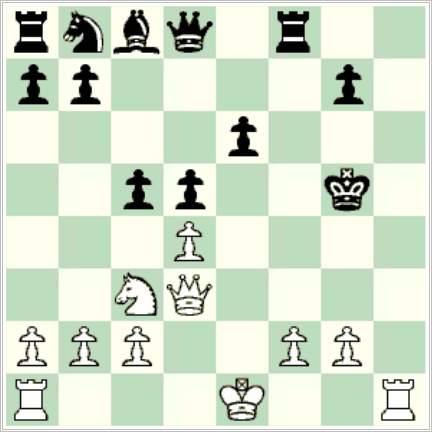Wolfgang Heidenfeld’s wild game against Arthur Cootes from the first round of the Irish championship in 1973—discussed by David McAlister in his reconstruction of the event in the previous post—featured a king hunt triggered by an early piece sacrifice by Cootes.
Heidenfeld seems to have had quite a casual attitude to it all, judging by his description in BCM:
“The Belfast player had brought his usual sacrifices on spec (a game without at least to sacrifice of a piece on KR7, whence the black King came in this position, is no game at all in his book.”
But was this lack of concern justified? The diagram shows the position with White to move a little earlier.

Position after 14… Kxg5
In this complicated position Cootes seems to be winning with best play: 15. Rh7!, when 15… Qe7? loses quickly (16. Qg3+ Kf6 17. Qh4+ Kf7 18. Rxg7+), as does 15… Rf7? (16. Qg3+ Kf6 17. Qh4+). Black can survive with 15… Kf6, but after 16. Qf3+ Ke7 17. Rxg7+ Kd6 18. dxc5+ Kc6 19. Qg3, but with two pawns for the piece and Black’s development a mess, White is winning. That leaves the unnatural-looking 15… Rg8 as the best practical chance. It’s very murky, but on resorting to engines, White’s best is 16. dxc5 Kf6 17. Rh3! (but not 17. O-O-O? Kf7!, with the idea of …Nd7-f6, about equal) 17… Nc6 18. O-O-O, when again it’s not over but White is winning.
Instead Cootes played 15. Qh7, after which the position is still about equal. (He only really went wrong with a second piece sacrifice on d5.)
